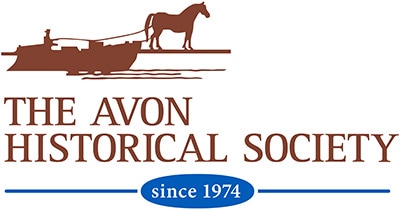Ethics, Issues and Where the Field Stands in 2024
The partnership of the Avon Historical Society, Avon Free Public Library, and Avon Senior Center is pleased to present the second lecture in their fourth annual five-part webinar series “Unearthing History: The Discovery of a 12,500-year-old Paleo-Indian Site along the Farmington River in Avon, CT.”
The second lecture entitled “Bioarchaeology: Research, Ethics, and Where the Field Stands in 2024” will be presented by Alex Garcia-Putnam, PhD, University of New Hampshire, Dept of Anthropology. It will be held on Thursday, April 11, 2024, beginning at 7:00 pm via Zoom through a link from the Library. Please register and a Zoom link will be sent out before the event.
Dr. Garcia-Putnam will present what bioarchaeology is and why it’s important to study human remains in order to understand how people lived. The field tackles questions about ancient disease, diet, activities patterns, demography and attempts to reconstruct the identities of the individuals studied.
The fourth annual “Unearthing History” series, sponsored by a grant from the Lower Farmington River and Salmon Brook Wild and Scenic Committee, is being held in response to the 2019 excavation of a 12,500-year-old (10,000BC) Paleo-Indian site six feet below ground during a CT Department of Transportation construction project of the now completed bridge on Old Farms and Waterville Roads at Route 10 in Avon, CT. The survey uncovered more than 18,000 artifacts and features that are characteristic of the Early and Middle Paleo-Indian periods. The site is named for Brian D. Jones, the late Connecticut State Archaeologist, who led the effort to dig deep based on earlier excavations in the area over the past few decades. Currently, this site is the oldest archaeological site of its kind in Southern New England.
According to Dr. Lucianne Lavin of the Institute for American Indian Studies in Washington, CT, the last Ice Age in this region began to melt away about 17,500BP (Before the Present). As it receded, a lush new land was exposed that provided for animal life to return about 13,500BP in the form of tundra-grazing animals such as mastodons, mammoths, horses, giant beaver, caribou, and more. The ancient communities of the Paleo-Indians are thought to have begun to arrive in the northeast after that time in search of those animals for food. They were the first settlers of what is now Connecticut and southern New England. (Connecticut’s Indigenous Peoples, by Lucianne Lavin, 2013, Yale University Press)
Partners in this series include the Farmington River Watershed Association, Institute of American Indian Studies, Washington, CT and The Avon Land Trust. The third webinar entitled “Foraging in the Paleoindian Period: A Macrobotanical Analysis” will be held on Thursday, May 9 at 7:00pm. It will be presented by Katharine Reinhart, Project Archaeologist/Botanical Analyst, Archaeological and Historical Services, Inc.
To watch the webinars from the 2021, 2022 and 2023 series on YouTube, visit: www.youtube.com/user/afplct
Please register and a Zoom link will be sent out before the event.



